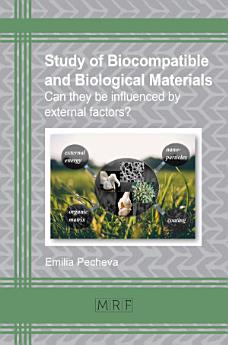Study of Biocompatible and Biological Materials: Can they be influenced by external factors?
Emilia Pecheva
May 2017 · Materials Research Forum LLC
Ebook
220
Pages
family_home
Eligible
info
reportRatings and reviews aren’t verified Learn More
About this ebook
The book focuses on the topic of bio-mineralization and discusses the properties of biological, biocompatible and biomimetic materials. The aim is to improve the performance of these materials. This can be accomplished by tailoring their surface properties by means of external factors and various surface modification techniques. In this way, the growth of biomaterials on surfaces can be influenced beneficially.
Chapter 2 explores typical techniques for surface characterization and shows how these techniques can be modified to serve specific needs in the study of biomaterials. Chapters 3 and 4 reveal factors that can be used to influence the growth of the biomaterial hydroxyapatite (the main inorganic constituent in mammal bones and teeth). Proteins are also used to modulate the cellular interactions with the hydroxyapatite. The remaining chapters are devoted to an example of the pathological mineralization, namely the formation of bacterial films on teeth and soft tissues in the mouth and how it can be removed to achieve better oral health.
Rate this ebook
Tell us what you think.
Reading information
Smartphones and tablets
Install the Google Play Books app for Android and iPad/iPhone. It syncs automatically with your account and allows you to read online or offline wherever you are.
Laptops and computers
You can listen to audiobooks purchased on Google Play using your computer's web browser.
eReaders and other devices
To read on e-ink devices like Kobo eReaders, you'll need to download a file and transfer it to your device. Follow the detailed Help Center instructions to transfer the files to supported eReaders.




